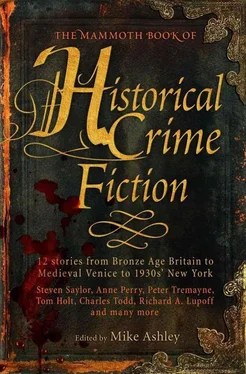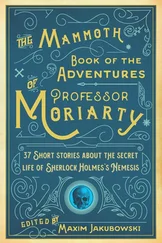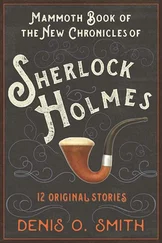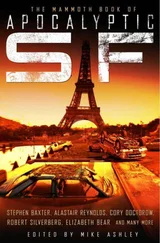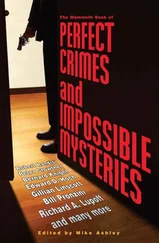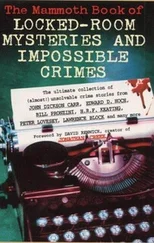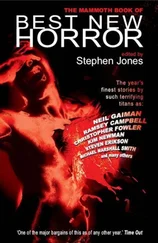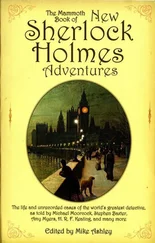From a husband-and-wife writing team to a mother and son. Charles Todd is the writing alias of Caroline and Charles Todd who, though both American, have chosen to set their novels in Britain. Their primary series features Inspector Rutledge, who has returned to Scotland Yard after the First World War but is affected by shell-shock, and is haunted by the memory of a soldier, Hamish, whom he had been forced to execute in the trenches. The Rutledge series began with A Test of Wills (1996), which was nominated for an Edgar Award. The series has been praised for the authenticity of its characterization and post-war atmosphere. The following story takes Rutledge across the length and breadth of southern Britain to solve a murder, where the roots seem to go back over a hundred years to the Battle of Trafalgar.
Mumford, Cambridgeshire, 1920
The old dog died at two o’clock, thrown unceremoniously out of his warm bed by the fire and on to the cold January ground.
And it was this fact that troubled Rutledge as he delved deeper into the mystery of Sir John Middleton’s death.
It was the housekeeper-cum-cook, gone to the village for onions for Sir John’s dinner, who found the old dog lying by the wall under the study window. Mrs Gravely, stooping to touch the greying head, said, “Oh, my dear!” aloud — for the old dog had been company in the house for her as well — and went inside to deliver the sad news.
Opening the door into the study as she was pulling her wool scarf from her head, she said anxiously, “Sir John, as I was coming in, I found — ”
Breaking off, she cried out in horror, ran to the body on the floor at the side of the Georgian desk, and bent to take one hand in her own as she knelt stiffly to stare into the bloody mask that was her employer’s face.
Her first thought was that he’d fallen and struck the edge of the desk, she told Rutledge afterwards. “I feared he’d got up from his chair to look for Simba, and took a dizzy turn. He had them sometimes, you know.”
The doctor had already confirmed this, and Rutledge nodded encouragingly, because he trusted Mrs Gravely’s honesty. He hadn’t been particularly impressed by the doctor’s manner.
Rutledge had been in Cambridge on Yard business, to identify a man brought in by the local constabulary. McDaniel was one of the finest forgers in the country, and it had appeared that the drunken Irishman, taken up after a brawl in a pub on the outskirts of town, was the man the police had been searching for since before the Great War. He fitted the meagre description sent round to every police station in the country. In the event, he was not their man — red hair and ugly scar on the side of the face notwithstanding. But Rutledge had a feeling that the McDaniel they wanted had slipped away in the aftermath of the brawl. The incarcerated man had rambled on about the cousin who would sort out the police quick enough, if he were there. When the police arrived at the lodgings that their man in custody had shared with his cousin, there was no one else there — and no sign that anyone else had ever been there. The case had gone cold, and Rutledge was preparing to return to the Yard when the Chief Constable came looking for him.
“Sir John Middleton was murdered in his own home,” Rutledge was told. “I want his killer, and I’ve asked the Yard to take over the inquiry. You’re to go there now, and I’ll put it right with the Chief Superintendent. The sooner someone takes charge, the better.”
And it was clear enough that the Chief Constable knew what he was about. For the local constable, a man named Forrest, was nervously pacing the kitchen when Rutledge got there, and the inspector who had been sent for from Cambridge had already been recalled. The body still lay where it had been found, pending Rutledge’s arrival, and, according to Forrest, no one had been interviewed.
Thanking him, Rutledge went into the study to look at the scene.
Middleton lay by the corner of his desk, one arm outstretched as if pleading for help.
“He was struck twice,” a voice said behind him, and Rutledge turned to find a thin, bespectacled man standing in the doorway. “Dr Taylor,” he went on. “I was told to wait in the parlour until you got here. The first blow was from behind, to the back of the head, knocking Sir John down but not killing him. A second blow to the face at the bridge of his nose finished him. I don’t know that he saw the first coming. He most certainly saw the second.”
“The weapon?”
Taylor shrugged. “Hard to say until I can examine him more closely. Nothing obvious, at any rate.”
“Has anything been taken?” Rutledge asked, turning to look at the room. It had not been ransacked. But a thief, knowing what he was after, would not have needed to search. There were framed photographs on the walls, an assortment of weapons — from an Australian boomerang to a Zulu cowhide shield — were arrayed between them, and every available surface seemed to hold souvenirs from Sir John’s long career in the army. A Kaiser Wilhelm helmet stood on the little table under the windows, the wooden propeller from a German aircraft was displayed across the tops of the bookshelves, and a half dozen brass shell-casings — most of them examples of trench art — were lined up in a cabinet that held more books.
“You must ask Mrs Gravely that question. The housekeeper. She’s been with him for a good many years. I went through the house, a cursory look after examining the body, to be certain there was no one hiding in another room. I saw nothing to indicate robbery.”
“Any idea when he was killed?”
“We can pinpoint the time fairly well from other evidence. When Mrs Gravely left to go into Mumford, he was alive and well, because she went to the study to ask if there were any letters she could take to the post for him. She was gone by her own account no more than three quarters of an hour, and found him lying as you see him when she returned. At a guess, I’d say he died between two and two-thirty.”
Rutledge nodded. “Thank you, Doctor. I’ll speak to her in a moment.”
It was dismissal, and the doctor clearly wished to remain. But Rutledge stood where he was, waiting, and finally the man turned on his heel and left the room. He didn’t precisely slam the door in his wake, but it closed with a decidedly loud snap.
Rutledge went to the window and looked out. It was then he saw the dog lying against the wall, only its feet and tail visible from that angle. Opening the window and bringing in the cold, damp winter air, he leaned out. There was no doubt the animal was dead.
He left the study and went out to kneel by the dog, which did not appear to have been harmed in the attack on Sir John. Death seemed to be due to natural causes and old age, judging from the greying muzzle.
Hamish said, “There’s been no one to bury him.”
An interesting point. He touched the body, but it was cold, already stiffening.
Back inside, he asked the constable where he could find Mrs Gravely, and he was told she was in her room at the top of the house.
He knocked, and a husky voice called “Come in.”
It was a small room, but backed up to the kitchen chimney and was warm enough. Cast-offs from the main part of the house furnished it: a brass bed, an oak bedside table, two comfortable wing chairs on either side of a square of blue carpet, and a maple table under the half-moon window in the eaves. A narrow bookcase held several novels and at least four cookbooks.
The woman seated in the far wing-chair rose as he crossed the threshold. She had been crying, but she seemed to be over the worst of her shock. He noted the teacup and saucer on the table and thought the constable must have brought it to her, not the doctor.
Читать дальше
